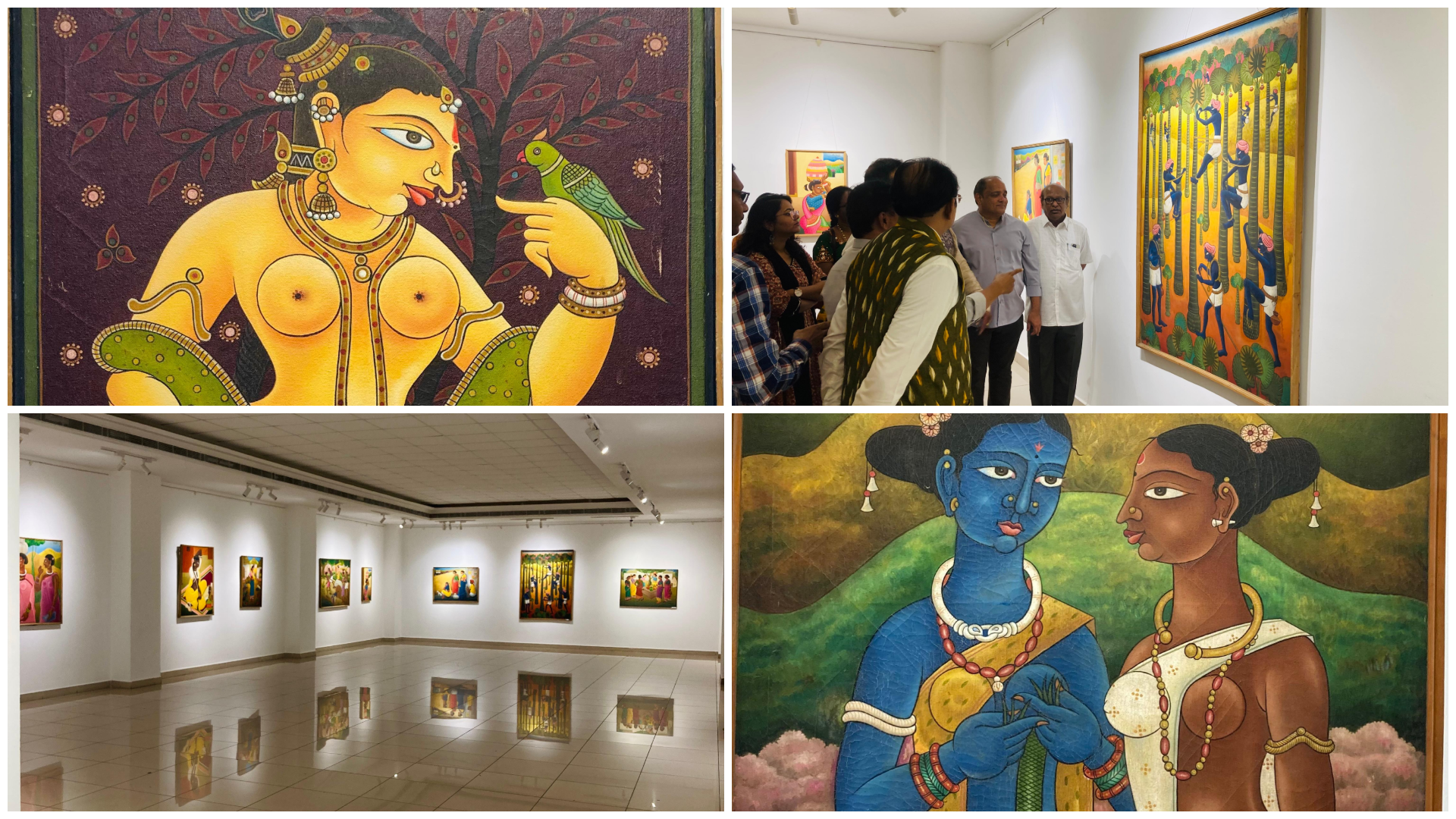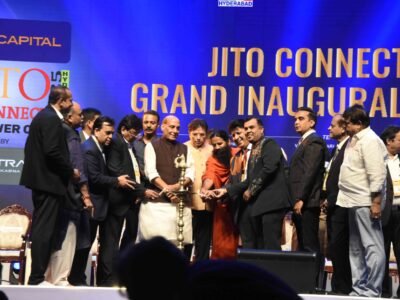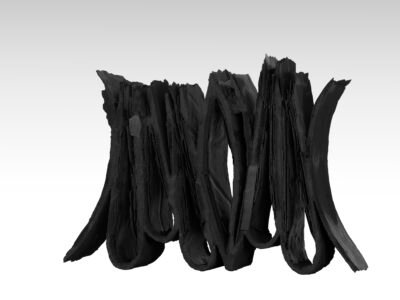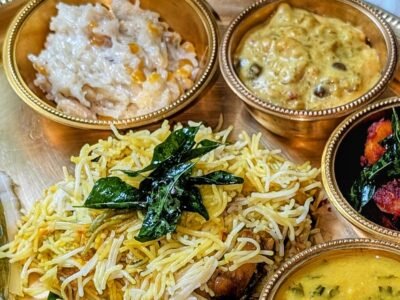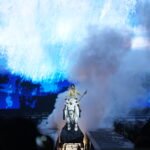Cultural Identity & Artistic Engagement – Late Dr Kapu Rajaiah’s Works Are
More Than Just Representation of Folk Traditions
Late Dr Kapu Rajaiah an artist from Siddipet gained popularity for his paintings with folk and regional influences. His works celebrated Telangana and its people, especially the women and the marginalised. They were deeply rooted in native culture and identity and continue to serve as ambassadors of cultural identity. His family celebrated his centenary by displaying his original paintings
at State Gallery of Art until August 10th
Dr. Kapu Rajaiah belonged to the generation of artists of Telangana who drew inspiration from the regional culture, the native lives and livelihoods, and the artistic traditions of the land. Combining his experiences, influences, and his professional training as an artist, Kapu Rajaiah created his unique style that is deeply rooted and yet modern in its expression. While he drew inspiration from the regional Nakashi paintings that emerged out of the storytelling tradition using scroll paintings, there is a contemporary setting that draws attention to the marginalised, the women, and the working class—from the coolies at a railway station to the Vaddera women on their way to work.
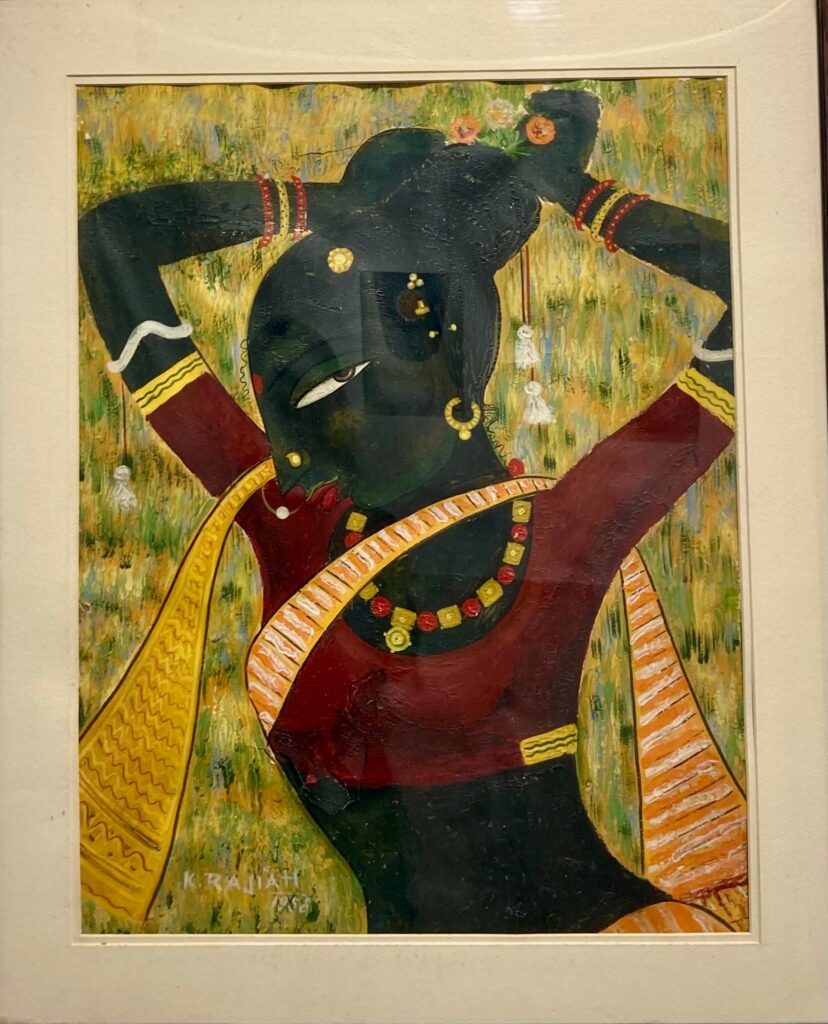
The women on his canvas are drawn from his neighbourhood—women busy with household chores, celebrating Bonalu, Bathukamma and other rituals, and from different occupations—the quintessentially native ‘Sodhi’ lady, the one selling milk… From their dark skin to dusky complexions, from the way they braid their hair to the flowers decking their buns, the kadiyam on their feet to the earrings and bangles—you see a culture that has long been one of the most vibrant but less celebrated. Perhaps this is the reason for the celebratory and decorative elements on his canvases even while showcasing the hardships of life and work.
The multi-hued background—at times plain and in many instances with green foliage and floral embellishments that bring a dreamy quality to his paintings—is reminiscent of the Deccan miniatures, not to mention his colour palette with reds, ochres. The Nakashi paintings and the Lepakshi murals have also been his influences, and this he mentioned in one of his books as well. He had a way with his bold lines, colour rendering, and the ornamentation of the painting that created a sense of movement and fluidity despite the flat finish.
Kapu Rajaiah’s art language is an interesting coming together of indigenous folk and traditional art forms, and his subjects are drawn from the Telangana region—primarily rural but not confined in that sense. While his visual language and his watercolours and oil-on-canvas works were steadily gaining popularity during his lifetime, he apparently rued the lack of a critical approach to his artistic expression.
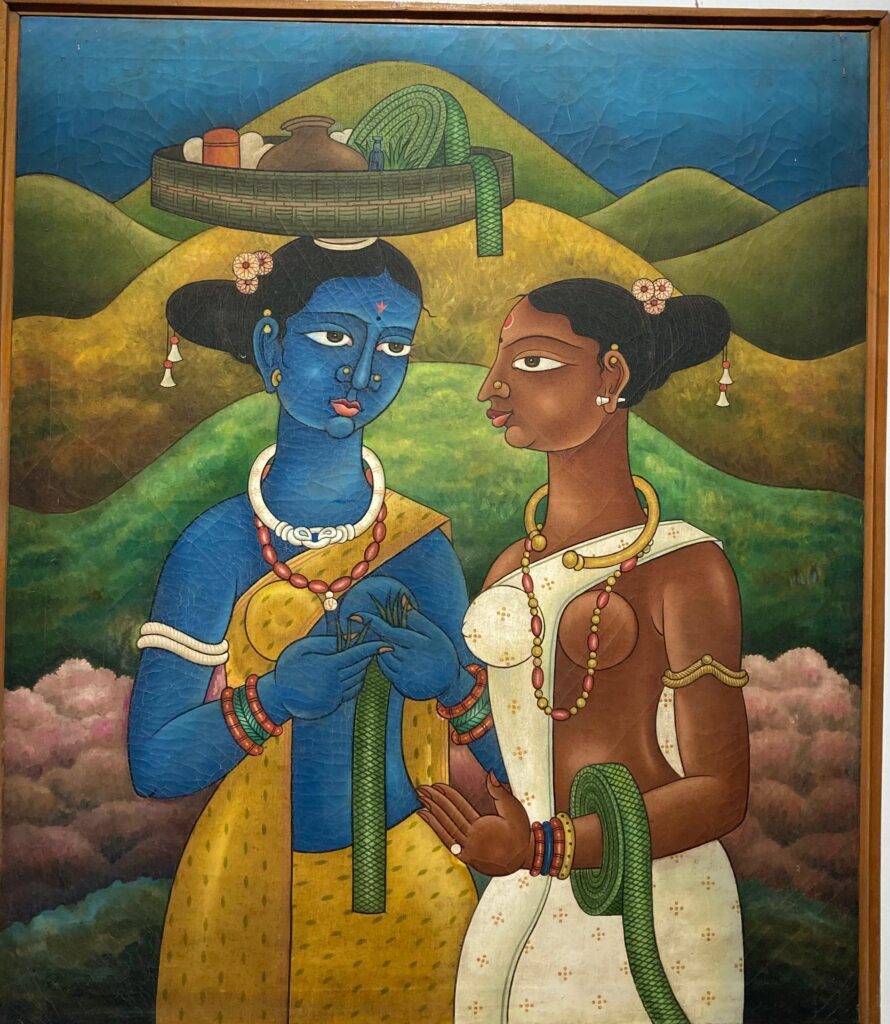 Today, when we look at the original paintings that are kept on display as part of his centenary celebrations in the presence of his family and friends from the art world, they are not just artistic expressions but a deeper engagement with native culture, identity, and life as he knew it. This he managed to do without sacrificing aesthetics, which in hindsight was also representative of the cultural richness of the land—and more importantly, an affirmation of strong cultural identity, which in his time was extremely important. He laid the foundation for several artists, now seniors and emerging, to explore a style of their own while staying connected to their native roots. Like him, the artists of today are sending their works to national and international exhibitions—and with them, the culture and identity of Telangana.
Today, when we look at the original paintings that are kept on display as part of his centenary celebrations in the presence of his family and friends from the art world, they are not just artistic expressions but a deeper engagement with native culture, identity, and life as he knew it. This he managed to do without sacrificing aesthetics, which in hindsight was also representative of the cultural richness of the land—and more importantly, an affirmation of strong cultural identity, which in his time was extremely important. He laid the foundation for several artists, now seniors and emerging, to explore a style of their own while staying connected to their native roots. Like him, the artists of today are sending their works to national and international exhibitions—and with them, the culture and identity of Telangana.
As any artist worth his while cannot alienate himself from a cultural movement, Kapu Rajaiah too—as art historian Anand Gadapa mentions in his Curator’s Note—advocated for Telangana’s cultural autonomy and dialect and emphasised the significance of regional cultural identity. With Telangana’s regional cultural identity at stake, he elevated the cultural narratives onto the national level in solidarity with the first Telangana Movement (1969).
His spiritual side is also on display as you see in his set of paintings glorifying Lord Vishnu. With these, Kapu Rajaiah went beyond what he is usually known for and is described as ‘folk and ethnic’. He uses geometric patterns and abstract expressions to tell mythological stories and represent faith that is deeply personal.
As part of Kapu Rajaiah’s Centenary Celebrations, his son Mahesh Kapu, who lives in California, USA, mentioned that digital prints of his works will be available for sale on the website – www.kapurajaiah.org, which will help keep his unique works in popular memory for times to come.


